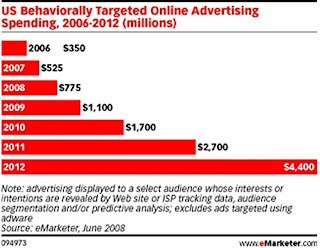
If you have been in the journalism business as long as I have (I was in a graduate journalism program in 1982 and have been writing professionally since 1983), a new report by Harvard's Shorenstein Center on the Press, Politics and Public Policy at Harvard's John F. Kennedy School of Government is no surprise.
The study found that Democrats got more coverage than Republicans (49% of the stories vs. 31%). It also found the "tone" of the coverage was more positive for Democrats (35% to 26% for Republicans), reports Investors Business Daily.
"In other words," the authors say, "not only did the Republicans receive less coverage overall, the attention they did get tended to be more negative than that of Democrats. And in some specific media genres, the difference is particularly striking."
The problem has gotten worse over the past decade or so, it seems. Part of the training routinely reminded journalists that they should not join voluntary associations or even have investments under their own control in any companies they might write about. To be sure, the media environment has changed since the advent of 24-hour news channels, blogging and the Internet. Not in a good way, my professors would likely say.
Those "genres" include the most mainstream of media — newspapers and TV. Fully 59% of front-page stories about Democrats in 11 newspapers had a "clear, positive message vs. 11% that carried a negative tone."
For "top-tier" candidates, the difference was even more apparent: Barack Obama's coverage was 70% positive and 9% negative, and Hillary Clinton's was 61% positive and 13% negative.
By contrast, 40% of the stories on Republican candidates were negative and 26% positive.
On TV, evening network newscasts gave 49% of their campaign coverage to the Democrats and 28% to Republicans. As for tone, 39.5% of the Democratic coverage was positive vs. 17.1%, while 18.6% of the Republican coverage was positive and 37.2% negative.
Researchers have been studying such biases for quite a long time, since the early 1970s at least. In 1972, "The News Twisters" by Edith Efron analyzed every prime-time network news show before the 1968 election and found coverage tilted 8 to 1 against Nixon on ABC, 10 to 1 on NBC and 16 to 1 on CBS.
In 1984, Public Opinion magazine found that Reagan got 7,230 seconds of negative coverage and just 730 seconds of positive; Mondale's positive press totaled 1,330 seconds, vs. 1,050 negative.
In 1986, "The Media Elite" surveyed 240 journalists at virtually every major media outlet and found that in presidential elections from 1964 to 1976, 86% of top journalists voted Democratic. A 2001 update found 76% voted for Dukakis in 1988 and 91% went for Clinton in 1992.
A 1992 Freedom Forum poll showed 89% of Washington reporters and bureau chiefs voting for Clinton in '92 and only 7% for George H.W. Bush.
A 2003 Pew survey found 34% of national journalists called themselves liberal and 7% conservative. By 7 to 1, they also felt they weren't critical enough of President Bush.





